How to Plant a Butterfly Garden with Kids
Everything you need to know how to plant a butterfly garden with your kids this summer.
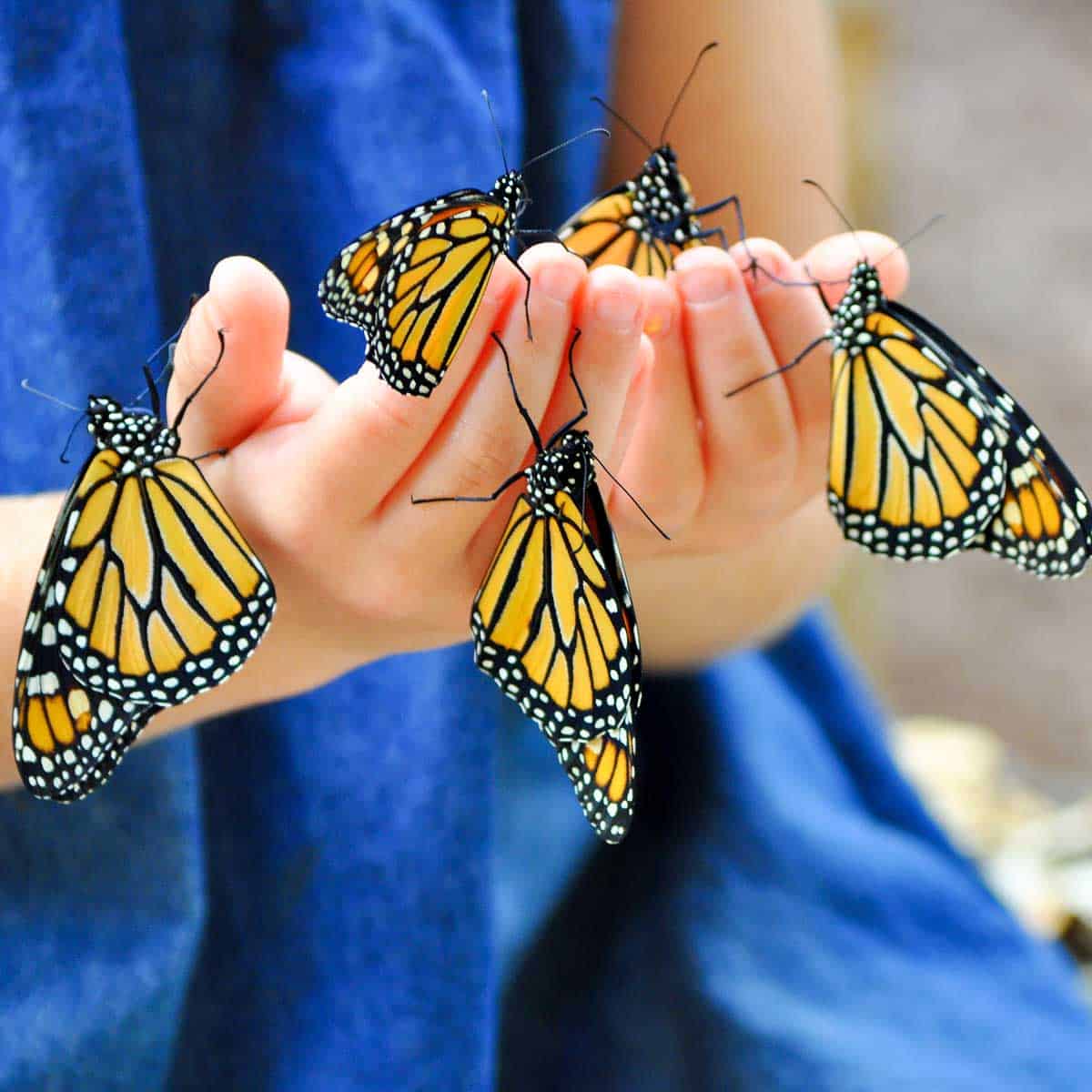
When we first moved to North Carolina, I was really shocked by the variety of garden plants that were suddenly available to us during planting season.
I knew we were moving to a warmer climate than the midwest, but I didn't expect the flowers to feel so tropical.
Thankfully, I quickly met my friend Amber who is a passionate backyard gardener and southern native. She has become my go-to advisor on what to plant in our yard and I drool over the lovely photos she shares of her plants.
But the photos that most caught my attention and took my breath away are the jaw dropping images of her adorable kids covered in Monarch butterflies:
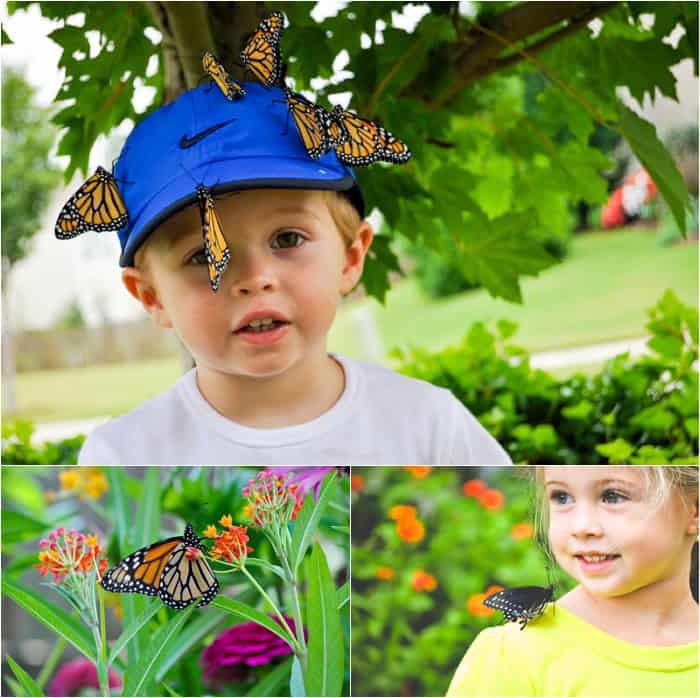
I mean, c'mon!! LOOK at those!
Amber is extremely passionate about her annual butterfly project with her kids and her enthusiasm is absolutely contagious.
I've been waiting all winter long to finally try it for ourselves. I can't wait to see what the kids think of the whole experience!
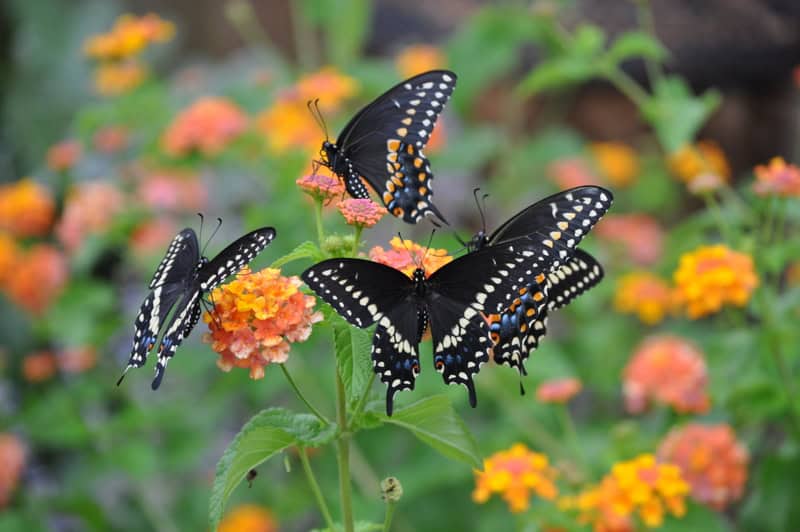
The main thing I've learned from Amber is that you need to curate a backyard that is filled with butterfly friendly plants to attract your fluttery visitors and provide them a happy space to grow.
Our yard is still a work in progress, but I started with a little research to see which summer blooming plants would be the most butterfly friendly.
5 Butterfly Friendly Plants
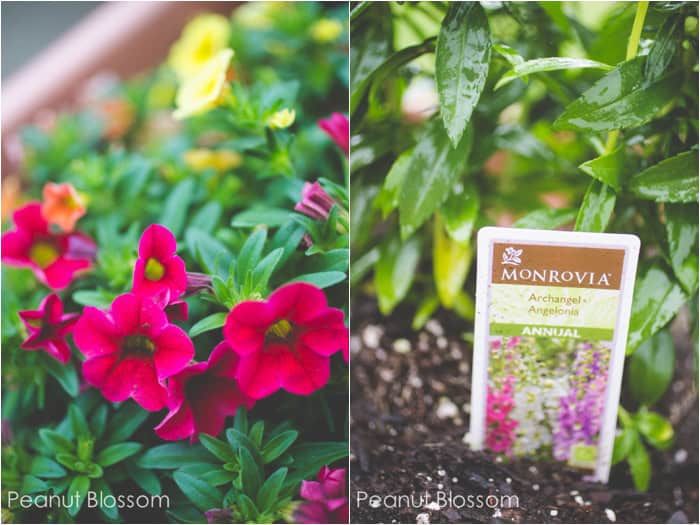
There are honestly so many butterfly friendly plants to choose from, but these are my favorites:
- Lantana: My very favorite on this list. I've grown it in our yard every year since the move and it grows huge and covered with gorgeous colorful and delicate looking flowers.
- Verbena: Great for large mounds of bright flowers.
- Calibrachoa: Bright and happy flowers that thrive in summer heat.
- Angelonia: Tall and vibrant blooms, perfect for potting.
- Butterfly Bush: Both butterflies and hummingbirds love this compact plant.
I headed to my local Lowe's and was able to find each of these ready to be brought home and put into containers for my patio garden:
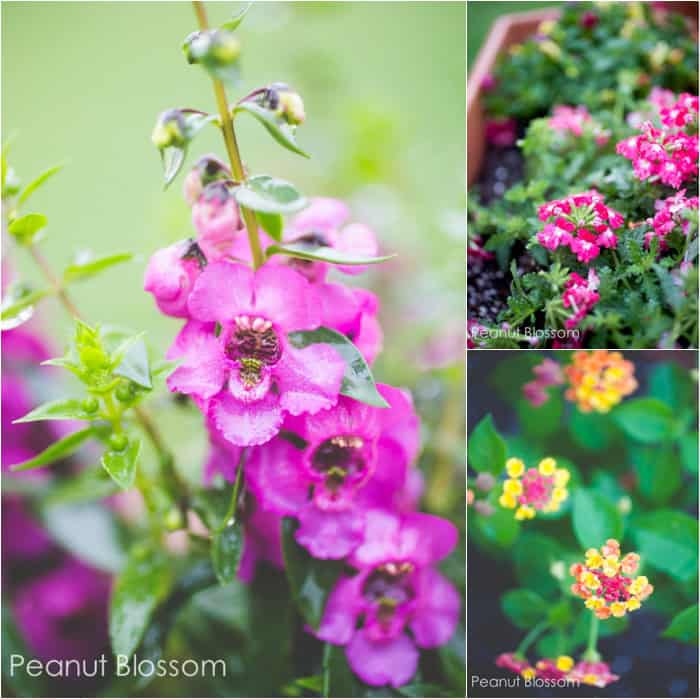
Container Garden or Yard?
If you have plenty of space in your yard, you can plant butterfly-friendly plants in full sun.
But if you're limited on space or prefer container gardening like I do, many of these butterfly plants do very well in pots on your patio!
I clustered the verbena and the calibrachoa into a long low pot and then gave the lantana and angelonia each their own massive pot to grow tall and wide.
Raise Caterpillars
The next step for our butterfly garden is raising the caterpillars.
We are starting with the easiest ones: Painted Lady butterflies.
I brought home a butterfly enclosure where we will raise the caterpillars until they are ready to be released.
Our little guys arrive on Saturday, we can't wait to get them started.
While we wait for the delivery, Amber suggested I also pick up 5-6 plants of parsley (it doesn't matter if it is a flat leaf or curly variety) and pot them altogether in one pot in order to attract black swallowtail butterflies to naturally come and lay their eggs.
According to her, we'll be able to watch the whole process right there in the pot.
I'm so excited to see how this works, our parsley is ready!
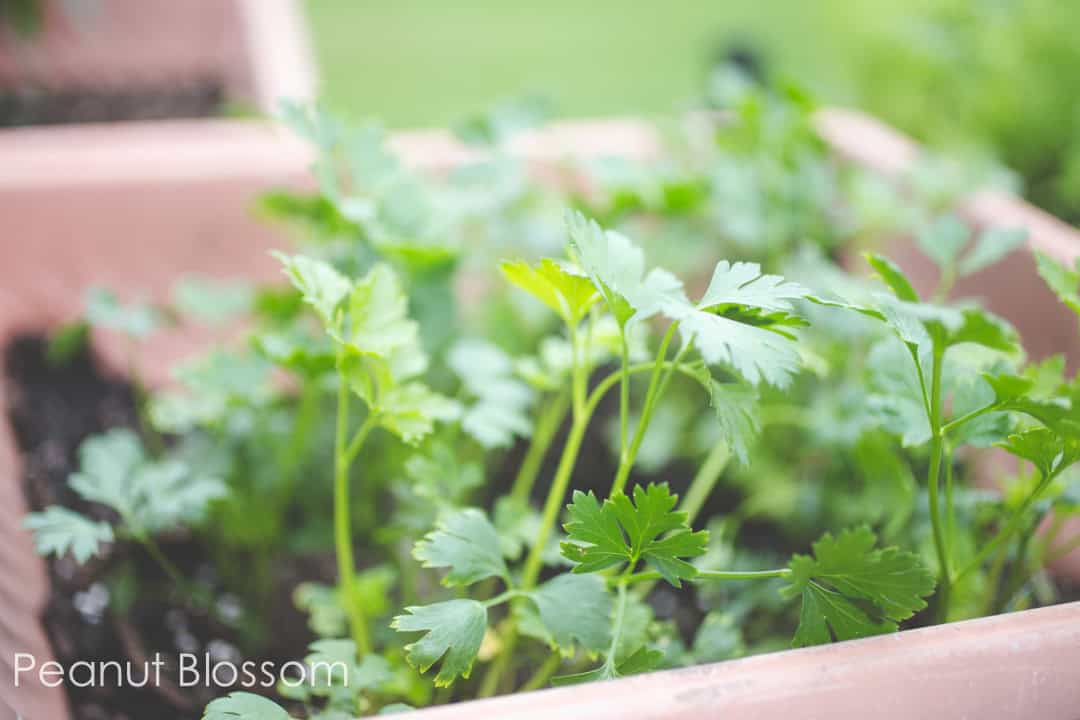
Apparently attracting and raising the lovely Monarchs takes a little more work and involves growing milkweed in your yard to help feed them.
Amber was kind enough to share several of her photos for this post, check out her Monarch resting on a lovely lantana plant:
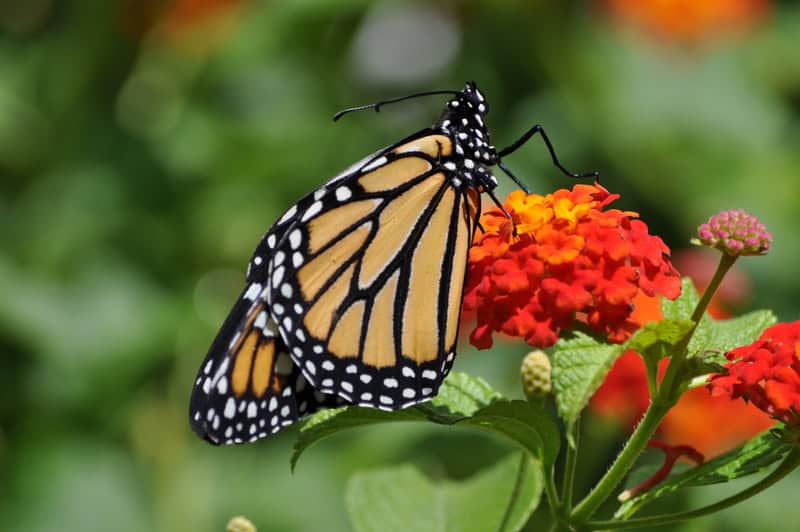
The process of growing the caterpillars and watching their life cycle should take about 3-4 weeks.
By starting our garden early in the season, I'm hoping we might be able to do 2 or 3 rounds of butterfly releases before the kids head back to school in the fall.
I'm guessing it is going to take them at least that many rounds to start to feel comfortable enough to let the butterflies sit on their finger or shoulders!
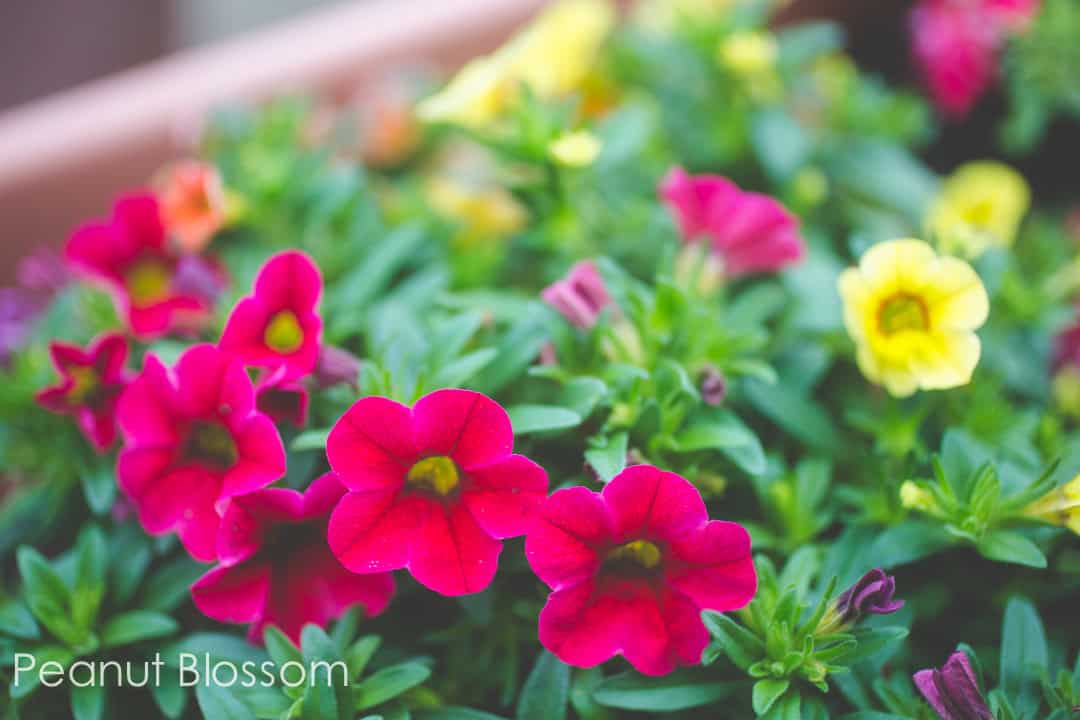
P.S. While we are waiting for our butterflies to emerge, I'm adding a bunch of these books to our library queue.
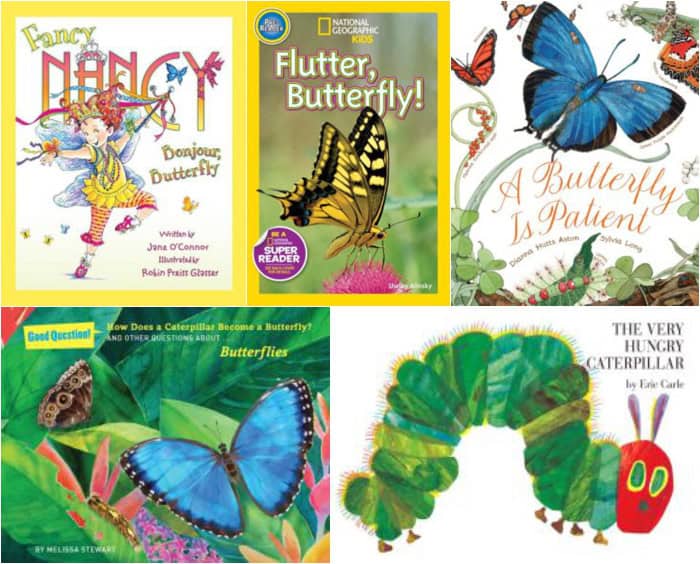

Great article and I'm so excited fior your children! Black Swallowtails also love dill. I would also suggest caution with Milkweed as it is toxic. (https://www.poison.org/articles/milkweed-can-cause-serious-poisoning-204) I have eaten the pods steamed though
MONARCH BUTTERFLY: NOT INVENTED BY NATURE
Babu G. Ranganathan
(B.A. Bible/Biology)
Just because something exists in nature doesn't mean it was invented or made by Nature. If all the chemicals necessary to make a cell were left to themselves, "Mother Nature" would have no ability to organize them into a cell. It requires an already existing cell (with a directing genetic code and biological machinery) to bring about another cell. The cell exists and reproduces in nature but Nature didn't invent or design it! Nature didn't originate the cell or any form of life. An intelligent power outside of nature had to be responsible.
Stanley Miller, in his famous experiment in 1953, showed that individual amino acids (the building blocks of life) could come into existence by chance. But, it's not enough just to have amino acids. The various amino acids that make-up life must link together in a precise sequence, just like the letters in a sentence, to form functioning protein molecules. If they're not in the right sequence the protein molecules won't work. It has never been shown that various amino acids can bind together into a sequence by chance to form protein molecules.
Also, what many don't realize is that Miller had a laboratory apparatus that shielded and protected the individual amino acids the moment they were formed, otherwise the amino acids would have quickly disintegrated and been destroyed in the mix of random energy and forces involved in Miller's experiment. A partially evolved cell (an oxymoron) would quickly disintegrate in the open environment, not wait millions of years for chance to make it complete and then become living.
Miller's experiment produced equally both left-handed and right-handed amino acids, but all living things strictly require only left-handed amino acids to be in the right sequence. If a right-handed amino acid gets into the chain the protein won't work. DNA and RNA, comprising the genetic code, require strictly only right-handed nucleic acids to be in an exact sequence.
The probability of just a single average protein size molecule arising by chance is 10 to the 65th power. Mathematicians have said any event in the universe with odds of 10 to 50th power or greater is impossible! Even the simplest cell is made up of many millions of various protein molecules. The late great British scientist Sir Frederick Hoyle calculated that the the odds of the simplest cell coming into existence by chance is 10 to the 40,000th power! How large is this? Consider that the total number of atoms in our universe is 10 to the 82 power.
The odds of even the simplest DNA code originating by chance is similar to that of a monkey producing a dictionary (with all the letters, words, and punctuation in the right sequence) by randomly pressing the keys on a computer keyboard or typewriter.
Natural laws can explain how an airplane or living cell works, but it's irrational to believe that mere undirected natural laws can bring about the origin of an airplane or a cell. Once you have a complete and living cell then the genetic program and biological machinery exist to direct the formation of more cells, but how could the cell have originated naturally when no directing code and mechanisms existed in nature? All of the founders of modern science believed in God. Read my Internet article: HOW FORENSIC SCIENCE REFUTES ATHEISM
Only evolution within "kinds" is genetically possible (i.e. varieties of dogs, cats, etc.), but not evolution across "kinds" (i.e. from sea sponge to human). How did species survive if their vital tissues, organs, reproductive systems were still evolving? Survival of the fittest would actually have prevented evolution across kinds! Read my Internet article: WAR AMONG EVOLUTIONISTS! (2nd Edition).
Natural selection doesn't produce biological traits or variations. It can only "select" from biological variations that are possible and which have survival value. For example, if a variation occurs (i.e. change in skin color) that helps an animal to survive, that survival is called being "selected." The real issue is what biological variations are possible, not natural selection.
Modern evolutionists believe and hope that over, supposedly, millions of years, random genetic mutations in the genes caused by environmental radiation will generate entirely new genes for natural selection to use. This is total blind and irrational faith. It's much like believing that randomly changing the sequence of letters in a romance novel, over millions of years, will turn it into a book on astronomy! That's the kind of blind faith macro-evolutionists have.
Mutations are accidents in the genetic code, are mostly harmful, and have no capability of producing greater complexity in the code. Even if a good accident occurred, for every good one there would be hundreds of harmful ones with the net result, over time, being harmful, even lethal, to the species. At best, mutations only produce further variations within a natural species. Even so, mutations are not the best explanation for variations within a natural species.
Since it isn't rational to believe that genetic information, like any other form of information, can arise by chance, then it is totally rational to believe that God (the Supreme Genetic Engineer), from the beginning, placed within all natural species the recessive and dominant genes to produce the varieties we find within natural species.
If life on earth had really existed for millions of years, all species would have become extinct by now due to the colossal number of accumulated mutations over time (please read the author’s popular Internet article, ARE FOSSILS REALLY MILLIONS OF YEARS OLD?).
What about genetic and biological similarities between species? Genetic information, like other forms of information, cannot happen by chance, so it is more logical to believe that genetic and biological similarities between all forms of life are due to a common Designer who designed similar functions for similar purposes. It doesn't mean all forms of life are biologically related! Only genetic similarities within a natural species proves relationship because it's only within a natural species that members can interbreed and reproduce.
"JUNK" DNA ISN'T JUNK. It's we who were ignorant of its usefulness. Recent scientific research published in scientific journals such as Nature and RNA has revealed that the “non-coding” segments of DNA are essential in regulating gene expression (i.e. when, where, and how genes are expressed, so they're not "junk").
Even more recent scientific evidence shows that they do code for proteins, after all, and that we need to readjust our thinking of how the cell reads the genetic code (Read "Human Proteome More Complex Than Previously Thought," Internet article by Dr. Jeffrey Tomkins). Recent research also shows that repetitive (or so-called "useless") structures in DNA are vital in forming the chromosome matrix, which, in turn, enables chromosomes to be functional and operative.
Read my popular Internet articles, HOW DID MY DNA MAKE ME? and HOW FORENSIC SCIENCE REFUTES ATHEISM
Visit my newest Internet site: THE SCIENCE SUPPORTING CREATION
Sincerely,
Babu G. Ranganathan*
(B.A. theology/biology)
Author of popular Internet article, TRADITIONAL DOCTRINE OF HELL EVOLVED FROM GREEK ROOTS
* I have had the privilege of being recognized in the 24th edition of Marquis "Who's Who In The East" for my writings on religion and science, and I have given successful lectures (with question and answer time afterwards) defending creation from science before evolutionist science faculty and students at various colleges and universities.
As my girlie grows she gets more and more interested of all kinds of insects and all the summer she spends walking around the garden in search of a new creature to observe. I was thinking of planting butterfly friendly flowers, because she's literally enchanted by butterflies. I haven't thought of raising caterpillars at all, but it's a good idea, and the butterfly enclosure is a nice tip. Thank you for the ideas and the information! I hope that next year our garden will be full of butterflies.
Moo is in love with butterflies since her class got to do a butterfly farm in their classroom. She was too excited about it and they learned about some of the plants that butterflies like. We've also read several of your butterfly book picks!
Hi! I live in FL and shortly after we moved here I was so excited to start a butterfly garden for my girls to see the whole process. We had been to a local butterfly nursery. I jumped right in with pots of milkweed and some nectar plants. It wasn't difficult and we have seen the whole life cycle several times over. It has been three years and my girls are now six and four. It didn't take them too long to hold the caterpillars and butterflies and my oldest is a cautious one.
Good luck! Try the milkweed! It isn't hard. Hardest part is keeping enough for them to eat! And you can move the plant into an enclosure once so they will build their chrysalis inside.